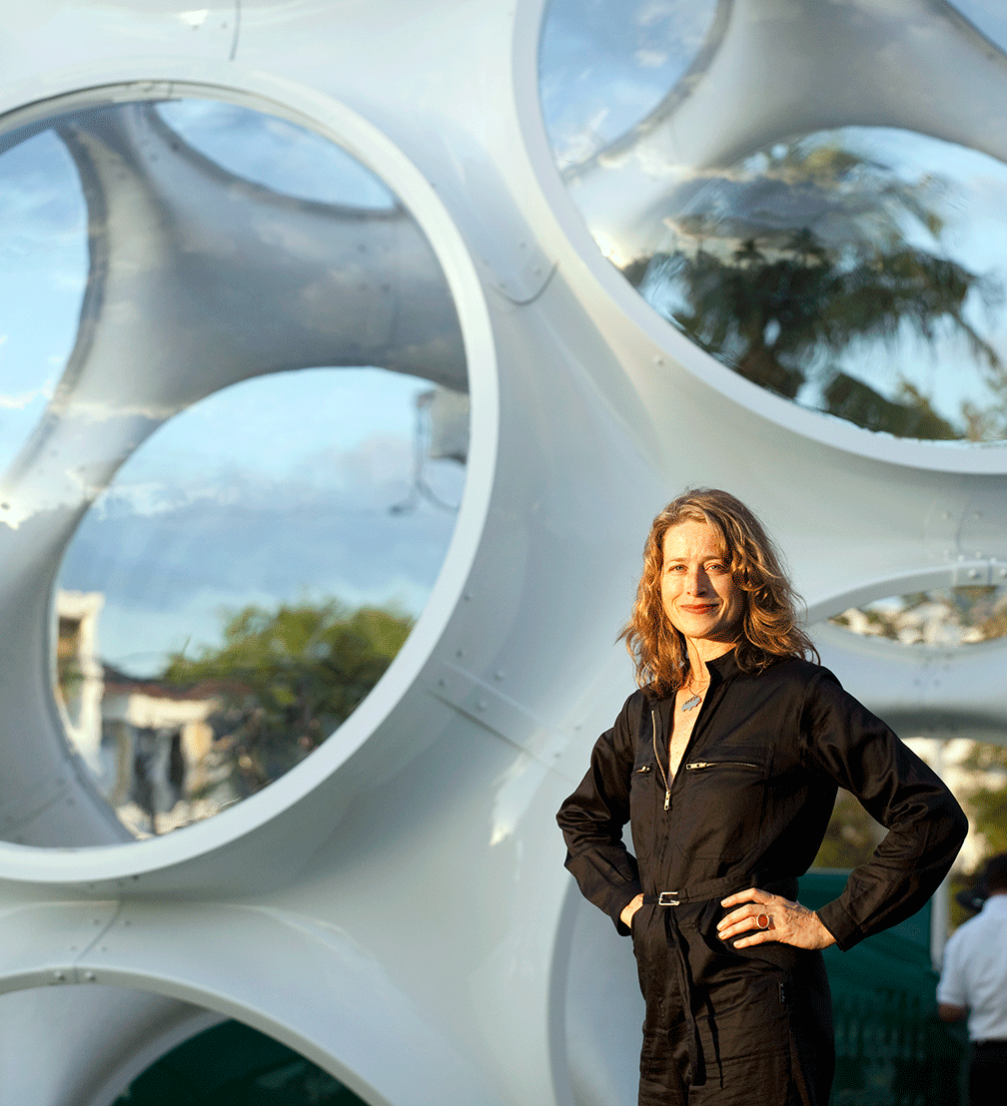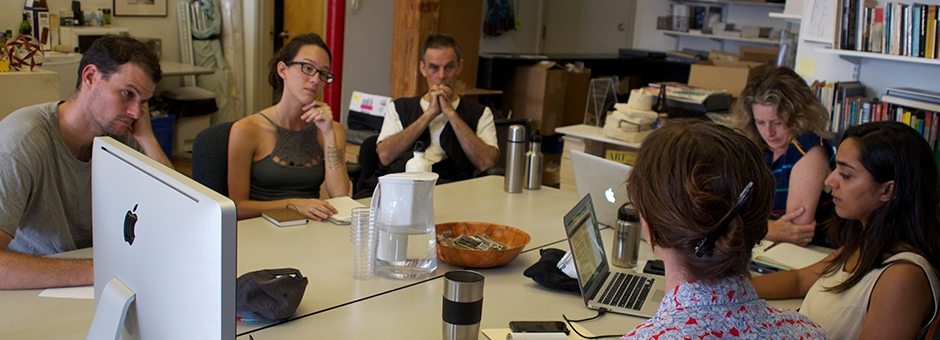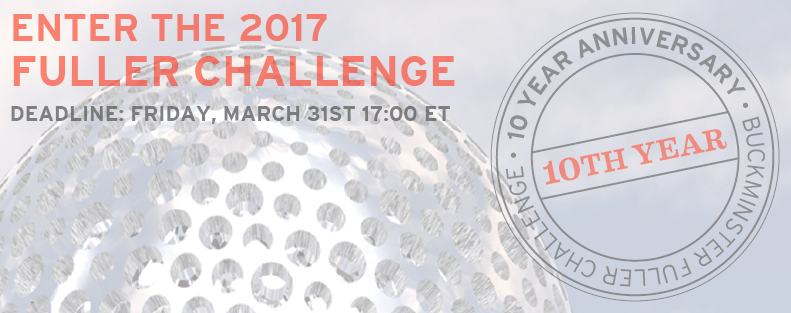This year marks the tenth anniversary of the Buckminster Fuller Challenge, socially responsible design’s highest award. Inspired by Buckminster Fuller’s quest to “make the world work for 100 percent of humanity in the shortest possible time through the spontaneous cooperation without ecological offense or the disadvantage of anyone,” the annual contest is call for creative designs to solve humanity’s pressing problems in a holistic, integrated way. The overall challenge winner gets $100,000 of unrestricted money (not to mention a whole huge helping of respect), while the institute’s Catalyst Program offers a number of benefits and opportunities to the top 20 percent of entrants.

The Rainforest Solutions Project protecting Canada’s Great Bear Rainforest won the 2016 BFI Challenge. Photo by Andrew Wright.
We’ve featured winners and finalists in Conscious Company before, and are always so inspired by the amazing things the entrants come up with. The challenge is open to initiatives of all sorts, including nonprofit, for-profit, and individual endeavors. Entrants must show that their design is at once:
- Visionary
- Comprehensive
- Anticipatory
- Ecologically responsible
- Replicable
- Feasible
- Verifiable
As the end entry period for the 2017 challenge comes to a close (the deadline is March 31), we wanted to get the inside scoop at how the team of jurors and expert advisors chooses the winners. So we asked Buckminster Fuller Challenge founding director Elizabeth Thompson and program manager Megan Ahearn to answer some common questions about the Challenge. Here’s the behind-the-scenes truth about the review process.
The Inside Scoop
What do you look for in a project, besides the seven official criteria we listed above?
Elizabeth Thompson: The projects need to present a truly integrated strategy, and by that we mean that the team has considered the interrelated domains of impact affecting the outcome of the solution. So, for example, a successful coastal restoration initiative upon which future human populations depend to survive would necessitate a vision that includes education, alternative economic development, alternative food production, potential policy change, etc.
How can an application stand out among hundreds of entries from around the world?
ET: We look for evidence of a very well thought-out vision that is deeply attuned to the complexities of the problem being addressed, coupled with a team that clearly is capable of carrying out that vision. This is a very difficult hurdle and those that cross it are few and far between! Fuller Challenge entrants address unique problems across a wide variety of disciplines, so our review team looks at a diversity of problem spaces and approaches. The standout entries are those that address problems in a way that is visionary but also realistic and achievable; comprehensive but also effective in tackling specific problems.
What is the Fuller Challenge not looking for?
ET: We aren’t looking for a stand-alone, isolated solution. We’ve had many entries that have, for example, successfully solved a short-term water shortage problem for a community by developing an innovative technological solution to better extract or purify groundwater. Many of these projects win other design awards, and they may even be invited to join our Catalyst Program. What would be missing from such an entry, in terms of being a Fuller Challenge winner, is the recognition of the context, the root of the problem, and therefore the long-term consequences of the isolated technological intervention.
What’s the biggest/most common mistake you see in applications?
ET: Not answering the questions! It’s remarkable to see how many earnest and well-meaning entries simply do not answer the questions in the application, but rather use the space provided as a soapbox to ‘sell’ their project. Our supplemental material section provides plenty of space for elaborating on the details, testimonials, anecdotes, etc. Our application questions, however, are very focused and have word limits of around 200. We urge our entrants to try to keep the answers to each of the distinct application questions concise and relevant.
The application allows the freedom to provide a lot of supplemental materials, including a short video. What types of materials are most useful to the review team?
Megan Ahearn: It’s important to note that we don’t review the supplemental materials in-depth unless a project progresses past the first stage of the review process. In the first stage, the answers to the 12 application questions are most critical for the review team to assess a project’s fit with our criteria. In later stages, the team appreciates a short, informative video, as well as photos demonstrating the work being done or depicting how the solution works. Successful entrants also provide PDFs that provide greater detail as to how their solution functions or will be implemented.
What are the most important application questions?
MA: While all of the 12 application questions are crucial for giving the review team a full picture of the proposed solution and its fit with our criteria, the most important questions in this year’s Challenge application form are arguably questions 2 through 5. These questions are concerned with the problem space, the systemic context, and how the proposed solution addresses critical needs. The answers should give the review team a sense of how the initiative takes a visionary, comprehensive approach to addressing multiple problems that are interrelated within a system. This comprehensive approach is a crucial aspect of what makes Buckminster Fuller Challenge winners unique.
How does the review team compare nonprofit initiatives to for-profit initiatives or social enterprises?
MA: Nonprofit initiatives and for-profit initiatives, such as social enterprises, are all reviewed in the same entry pool. The review team does not distinguish between projects in terms of their financial model — in the end it comes down to the initiative’s fit with our seven criteria. It happens to be the case that the majority of our entries (over 60 percent in 2016) usually come from for-profit or individual initiatives, rather than nonprofits. Our semifinalists, finalists, and winners showcase a mix of both for-profit and nonprofit work.
Does an organization have a better shot at winning the Challenge versus an individual or a small team?
Our past winners include both large teams and individual or two-person initiatives. Whether you represent a large organization or a small, two-person team, we’re looking for evidence of how the people behind an initiative can contribute to its success. We want to see that behind a visionary idea, there are people with the right background or track record to ensure that the idea is feasible and can be carried out to success. Sometimes, as in the case of Buckminster Fuller himself, all this takes is one individual with a powerful vision and a history of successful experimentation!
How to Enter
For more information or to submit your application, visit the BFI Challenge website.









